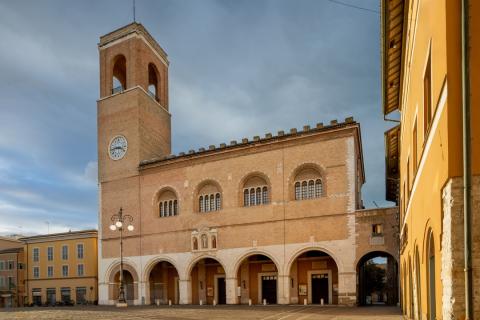Also known as Palazzo della Ragione, the Palazzo del Podestà, built in the thirteenth century and seat of the city's civil and administrative power, overlooks the eclectic Piazza XX Settembre and is today home to the Teatro della Fortuna. With imposing and monumental forms, the building presents a significant alternation of styles, testifying to the numerous aesthetic and functional mutations undergone over the centuries.
Built in 1299, as evidenced by the clearly visible epigraph on the right corner pillar, the Palazzo del Podestà was built by Bernabò di Lando, elected first captain, governor and defender and reformer of the people of the city of Fano to try to quell the dangerous struggles internal among the noble families of Fano, the Palazzo del Podestà represents an architectural and historical point of reference for the city, and a tangible testimony of the various eras that have passed through it, modifying its structure. The building, characterized by sobriety and austerity, has a majestic portico made of stone, characterized by five full-arch arches. The upper part is instead made of bricks with the exception of the nineteenth-century stone columns and the ancient mayor's coats of arms which have almost completely been erased. Today it is still possible to observe in the center of the facade, above the third arch, the Triptych of the Protectors of the city: San Paterniano in the centre, flanked by San Fortunato and San Eusebio on the sides dating back to two different eras: the central niche with the statuette in stone of S. Paterniano is from the early years of the 14th century, while the lateral niches with the terracotta statuettes of S. Fortunato and S. Eusebio are the work of the century. XVI.
The civic tower that currently dominates the building was built in 1950 to replace the so-called "square bell tower" from the eighteenth century, destroyed, like almost all the other bell towers of the city's churches, by the retreating German troops in August 1944.
